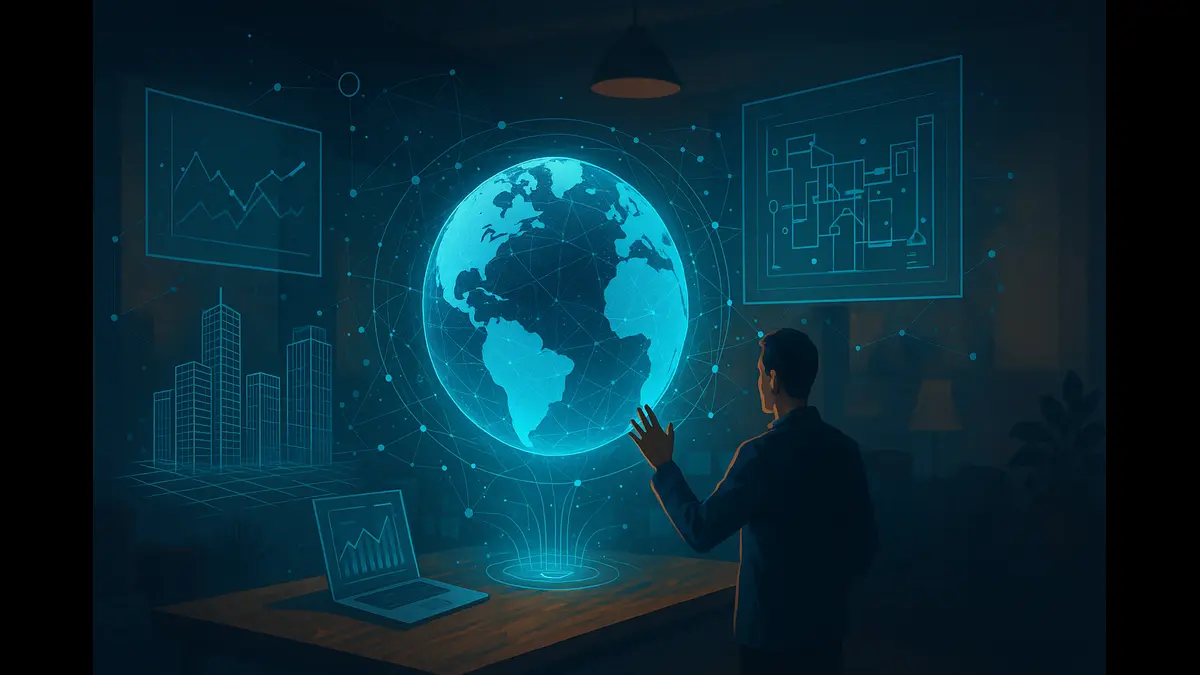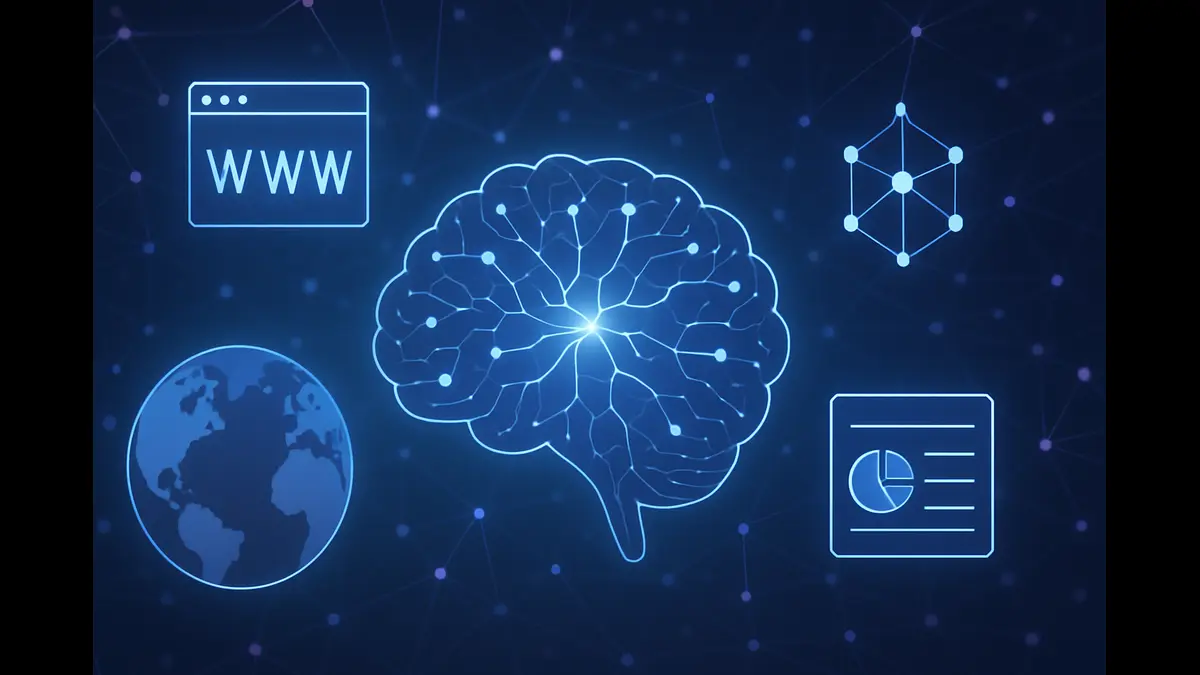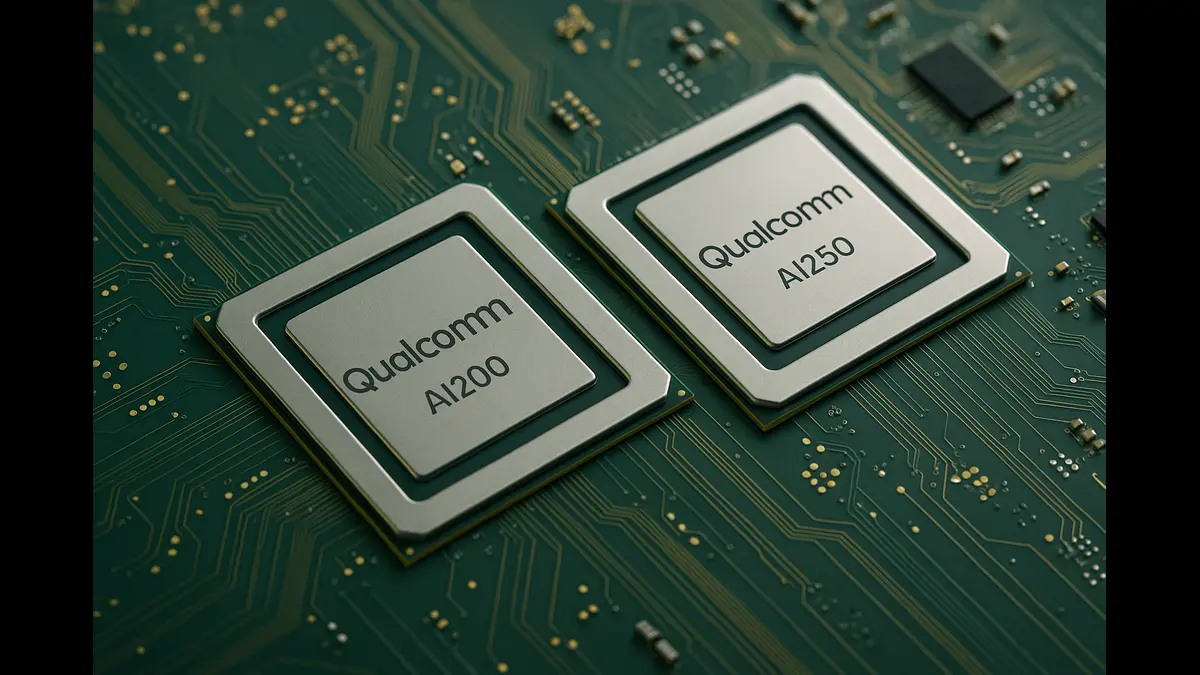
Spatial computing is reshaping industries in 2025, fusing AI and real-world data to build immersive, intelligent environments.
In an era where technology increasingly mirrors the nuances of human interaction, spatial computing emerges as a transformative force, seamlessly weaving digital elements into our physical surroundings. Envision a surgeon rehearsing a complex procedure on a holographic model that responds in real time, or an architect collaborating with global colleagues around a virtual blueprint that adapts to environmental data. This is the essence of spatial computing—a paradigm that extends beyond screens to create intuitive, immersive experiences.
As we navigate 2025, this technology, first conceptualized by researchers like Simon Greenwold in 2003, is not merely advancing; it is redefining how we perceive and engage with the world. For those passionate about artificial intelligence and its intersections with reality, spatial computing represents a profound leap, blending augmented reality (AR), virtual reality (VR), and mixed reality (MR) into environments that feel inherently natural and responsive.
The global spatial computing market, valued at USD 141.51 billion in 2024, is projected to reach USD 945.81 billion by 2033, expanding at a compound annual growth rate (CAGR) of 21.7%. This growth underscores its broadening appeal, particularly in North America, which commands over 33.5% of the market share due to robust investments in research and development. What drives this surge? Rapid advancements in AI enable systems to interpret spatial data with unprecedented accuracy, making interactions more lifelike.
In this article, we will define spatial computing, trace its historical development, examine AI’s pivotal contributions, highlight key technologies and applications, address challenges, and consider its future trajectory—all while distinguishing it from related concepts like edge computing.
Defining Spatial Computing: Beyond Traditional Interfaces
Spatial computing fundamentally involves technologies that allow digital content to coexist and interact with the physical environment in a context-aware manner. As defined by industry analysts, it encompasses “the augmentation of the physical world by anchoring digital content in the real world, enabling users to interact with it in an immersive, realistic, and intuitive experience.” Unlike conventional computing confined to flat displays, spatial systems employ sensors to map spaces, permitting users to manipulate virtual objects as though they were tangible—through gestures, voice, or even gaze.
This human-like quality stems from its emphasis on spatial awareness: devices pinpoint locations with millimeter precision and maintain “persistent” digital anchors, such as leaving a virtual note on a real-world desk that reappears upon return. In 2025, platforms like Apple’s Vision Pro, enhanced by its visionOS updates, exemplify this, integrating AI to anticipate user needs and refine interactions. For AI enthusiasts, this means models evolve from text-based responses to embodied agents that navigate and reason in three dimensions, fostering a more organic symbiosis between humans and machines.
Historical Evolution: From Conceptual Foundations to Mainstream Adoption
The journey of spatial computing began in the 1960s with Ivan Sutherland’s pioneering VR headset, which envisioned displays that could “look and change the world.” The 2010s accelerated progress, with Pokémon GO demonstrating AR’s mass-market viability and Microsoft’s HoloLens introducing holographic applications for enterprises.
A pivotal moment arrived in 2023 with Apple’s Vision Pro, heralding spatial computing as a new computing era. By 2025, the market has matured significantly, with Precedence Research estimating its value at USD 149.59 billion in 2024 and projecting continued rapid expansion into 2025. In North America alone, the sector reached USD 58.77 billion in 2024 and is forecasted to grow to USD 260.84 billion by 2032 at a CAGR of 20.9%.
Recent milestones include HTC’s VIVE XR Elite receiving significant software updates in early 2025, such as the January beta release enhancing AI-driven multilingual collaboration features, and initiatives like the Mayo Clinic’s integration of VR/AR for surgeries as part of broader spatial computing advancements in medical research. These developments reflect a shift from experimental tools to indispensable solutions, amplified by AI’s integration.
AI’s Integral Role: Infusing Intelligence into Spatial Environments
Artificial intelligence serves as the cognitive backbone of spatial computing, transforming static overlays into dynamic, predictive systems. In 2025, multimodal AI models process diverse inputs—text, images, video, and spatial data—enabling sophisticated reasoning. For instance, neural-symbolic approaches enhance 3D problem-solving, where AI chains logical inferences with visual cues to achieve higher accuracy.
Generative AI further elevates this, creating interactive models on demand, as seen in datasets like SpatialVID, which offers over 7,000 hours of annotated footage for training spatially aware agents. Companies like Mawari, having secured USD 10.8 million in funding in September 2024, leverage AI for low-latency XR streaming via distributed networks. In practical terms, AI agents anticipate actions, such as adjusting a hologram’s scale preemptively, fostering experiences that feel anticipatory and human-like. As Deloitte observes, this convergence could yield seamless integrations across sectors by 2030.
Core Technologies: The Building Blocks of Immersive Realities
Spatial computing relies on a sophisticated array of hardware and software. Sensors like LiDAR and inertial measurement units (IMUs) enable real-time environmental mapping, while simultaneous localization and mapping (SLAM) algorithms construct enduring 3D models. AI-optimized chips, such as NVIDIA’s accelerators, ensure efficient processing.
Innovations in 2025 include wavelet transform-based neural networks for precise wearable positioning and Gaussian splatting for photorealistic digital twins. Tools like DuckDB support vast geospatial datasets, empowering developers to build scalable applications.
It is essential to differentiate spatial computing from edge computing, a related yet distinct paradigm. While spatial computing focuses on enriching user experiences by overlaying digital information onto physical spaces—emphasizing immersion and interaction—edge computing prioritizes data processing at or near the source to minimize latency and bandwidth usage. For example, edge computing might handle real-time analytics on a device to support quick decisions, whereas spatial computing uses those computations to render interactive holograms. Though complementary—spatial applications often depend on edge infrastructure for fluid performance—they serve different primary goals: edge enhances efficiency in data handling, while spatial reimagines human-computer interfaces in a three-dimensional context.
Real-World Applications: Driving Innovation Across Sectors
In 2025, spatial computing’s impact is evident in diverse fields. Healthcare benefits from platforms like XRHealth, which raised USD 6 million to deliver AR-based remote therapy. Educational tools, such as haptic-enabled virtual dissection platforms, have been shown to significantly improve student attitudes and engagement in STEM, as demonstrated in studies on VR physiology labs. In retail, AR virtual try-ons reduce returns by 30%, enhancing customer satisfaction. Manufacturing leaders like BMW utilize digital twins to minimize assembly errors, while biotech advances spatial transcriptomics for detailed cancer mapping. These implementations demonstrate tangible returns on investment, propelling widespread adoption.
Addressing Challenges: Ethical and Practical Considerations
Despite its promise, spatial computing faces hurdles. Privacy concerns arise from pervasive tracking, necessitating advanced encryption protocols. Accessibility remains an issue, with devices like Vision Pro priced at over USD 3,500, limiting reach, and motion sickness affecting 20-30% of new users to varying degrees. Energy consumption is another pressing matter, with AI-intensive spatial systems potentially rivaling urban power demands by 2030. Ethical biases in AI could exacerbate disparities, prompting calls for inclusive standards from bodies like the United Nations.
By 2030, spatial computing may integrate agentic AI swarms for autonomous collaborations in hybrid realities. Decentralized platforms could democratize access, blending Web3 with uncensorable digital layers, while robotics enhance smart environments. This evolution promises a “layered reality” where boundaries between physical and digital dissolve.
Spatial computing in 2025 transcends novelty, offering a framework for more intuitive, empowered human experiences. From AI-enhanced healthcare to collaborative designs, it invites us to rethink our interactions with technology. As enthusiasts, consider experimenting with accessible tools—what insights might you uncover? The spatial age beckons, poised to enrich our world in ways we are only beginning to imagine.
Discover more from Poniak Times
Subscribe to get the latest posts sent to your email.






